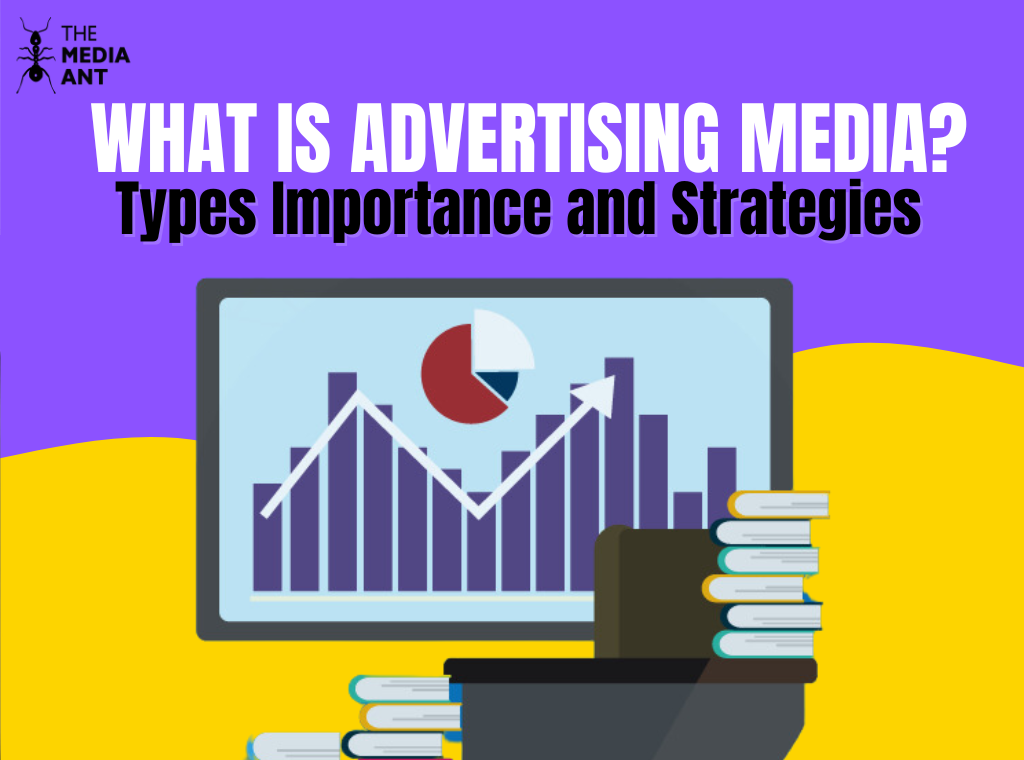Advertising Media serves as the lifeblood of marketing efforts, acting as the conduit through which brands communicate with their audience. In today’s dynamic landscape, understanding the intricacies of advertising media has become paramount for businesses aiming to thrive in a competitive marketplace. This exploration delves into the fundamental aspects of advertising media, shedding light on its types, significance, and strategies employed to maximize its impact.
What is Advertising Media?
Advertising media encompasses the various channels and platforms utilized by businesses to convey promotional messages to their target audience. These channels range from traditional mediums like television, radio, newspapers, and magazines to modern digital platforms such as social media, websites, email, and mobile apps. The primary objective of advertising media is to reach and engage potential customers effectively, influencing their purchasing decisions and building brand awareness. Understanding the types, importance, and strategic deployment of advertising media is crucial for businesses aiming to succeed in today’s competitive market landscape.
Different Types of Advertising Media
Various types of advertising media exist, each offering unique advantages and catering to different target audiences. Here are some common types:
1. Television Advertising
Utilizing both broadcast and cable networks, television advertising reaches a broad audience with visual and auditory appeal, making it suitable for storytelling and creating memorable brand experiences.
2. Radio Advertising
Radio ads reach listeners through audio broadcasts, offering a cost-effective way to target specific demographics and regions while leveraging the power of sound to engage audiences.
3. Print Advertising
Print media includes newspapers, magazines, brochures, and flyers, offering tangible formats for delivering detailed information and visual content to targeted audiences.
4. Digital Advertising
Digital Advertising encompasses a wide range of online platforms such as social media, search engines, websites, email, and mobile apps, providing highly targeted and measurable advertising options with the ability to reach vast audiences globally.
5. Outdoor Advertising
Outdoor ads include billboards, transit ads, posters, and signage placed in high-traffic areas, offering broad visibility and exposure to a diverse audience.
6. Direct Mail Advertising
Direct mail involves sending promotional materials such as postcards, catalogs, and letters directly to targeted individuals or households, offering a personalized and tangible way to engage with potential customers.
7. Cinema Advertising
Ads displayed in movie theaters before film screenings provide a captive audience with high-quality audio and visual experiences, suitable for reaching specific demographics and interests.
8. Product Placement
Product placement involves integrating branded products or messages into TV shows, movies, video games, or other forms of media content, subtly promoting products within the context of the storyline.
Importance of Advertising Media
Advertising media plays a crucial role in modern marketing strategies, offering several key benefits that contribute to the success of businesses:
1. Brand Visibility and Awareness
Advertising media enhances brand visibility by reaching a wide audience across various channels. Consistent exposure through media platforms increases brand awareness, making the brand more recognizable and memorable among consumers.
2. Audience Targeting
Different advertising media allow businesses to target specific demographics, interests, and geographic locations, ensuring that promotional messages reach the most relevant audience segments. This targeted approach maximizes the efficiency of advertising efforts and increases the likelihood of attracting potential customers.
3. Influencing Consumer Behavior
Effective advertising media have the power to influence consumer perceptions, attitudes, and purchasing decisions. Compelling advertisements can create positive associations with the brand, encourage brand loyalty, and persuade consumers to choose the advertised products or services over competitors’.
4. Driving Sales and Revenue
Well-executed advertising campaigns can drive sales and revenue growth by generating interest and demand for products or services. By reaching potential customers at various stages of the buying journey, advertising media contribute to increasing conversion rates and driving business profitability.
5. Staying Competitive
In today’s competitive market landscape, businesses need to maintain a strong presence and remain top-of-mind among consumers. Advertising media allow businesses to stay competitive by keeping their brand visible and relevant in the minds of consumers, helping them stand out amidst competition and maintain market share.
Strategies for Utilizing Advertising Media
1. Targeted Audience Segmentation
Segment your target audience based on demographics, interests, behaviors, and preferences. Utilize advertising media channels that allow precise targeting to ensure your messages reach the most relevant audience segments, increasing the likelihood of engagement and conversion.
2. Integrated Marketing Campaigns
Create integrated marketing campaigns that combine multiple advertising media channels to reinforce your message and maximize reach. Align your messaging and creative assets across different platforms to create a cohesive brand experience and increase brand recall among consumers.
3. Data-Driven Decision Making
Utilize data analytics and insights to inform your advertising media strategy. Monitor key performance indicators (KPIs) such as audience engagement, conversion rates, and ROI to identify trends, optimize campaign performance, and allocate resources effectively.
4. Personalized and Interactive Content
Develop personalized and interactive advertising content that resonates with your target audience and encourages active engagement. Leverage interactive formats such as quizzes, polls, and surveys to capture attention and foster two-way communication with consumers.
5. Continuous Testing and Optimization
Implement a culture of continuous testing and optimization to refine your advertising media strategy over time. A/B test different ad creatives, messaging variations, and media placements to identify what resonates best with your audience and drive better results.
Conclusion
In conclusion, advertising media stands as a cornerstone in the realm of marketing, offering a diverse array of channels and platforms for brands to engage with their target audience. By comprehending the various types, recognizing its inherent importance, and deploying effective strategies, businesses can harness the power of advertising media to elevate their brand presence, foster customer connections, and ultimately drive success in an ever-evolving marketplace.
FAQs on Advertising Media
1. How do you select advertising media?
Advertising media selection involves understanding target audience demographics, behaviors, and preferences. Assess each media’s reach, cost-effectiveness, and ability to convey your message effectively. Choose media channels that align with your campaign objectives and offer the best opportunity to reach your audience.
2. What are the forms of advertising media?
Forms of advertising media include television, radio, print (newspapers, magazines), digital (social media, websites, email), outdoor (billboards, transit ads), cinema, and product placement. Each form offers unique advantages for reaching and engaging target audiences.
3. What is the most popular type of advertising media?
The most popular type of advertising media varies depending on factors such as target audience, industry, and campaign objectives. However, digital advertising, particularly through social media platforms like Facebook and Google Ads, is widely used due to its extensive reach and targeting capabilities.
4. How many types of media are there in advertising?
There are several types of media used in advertising, including traditional forms such as television, radio, print, and outdoor, as well as digital platforms like social media, websites, email, and mobile apps. Each type offers unique advantages for reaching target audiences.
5. What is the best method of advertising?
The best method of advertising depends on factors such as target audience, campaign objectives, budget, and industry. A combination of different advertising methods, tailored to the specific needs and preferences of the target audience, often yields the most effective results.





